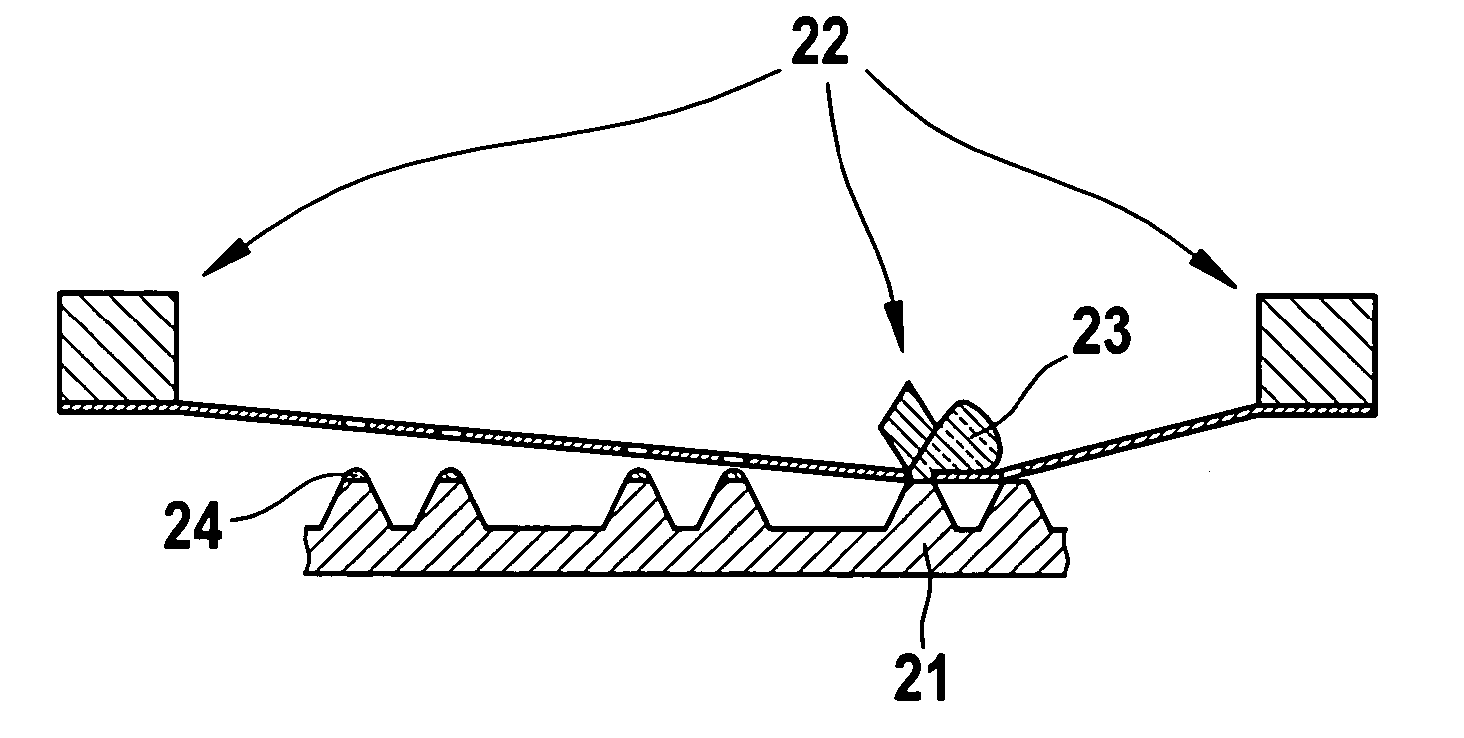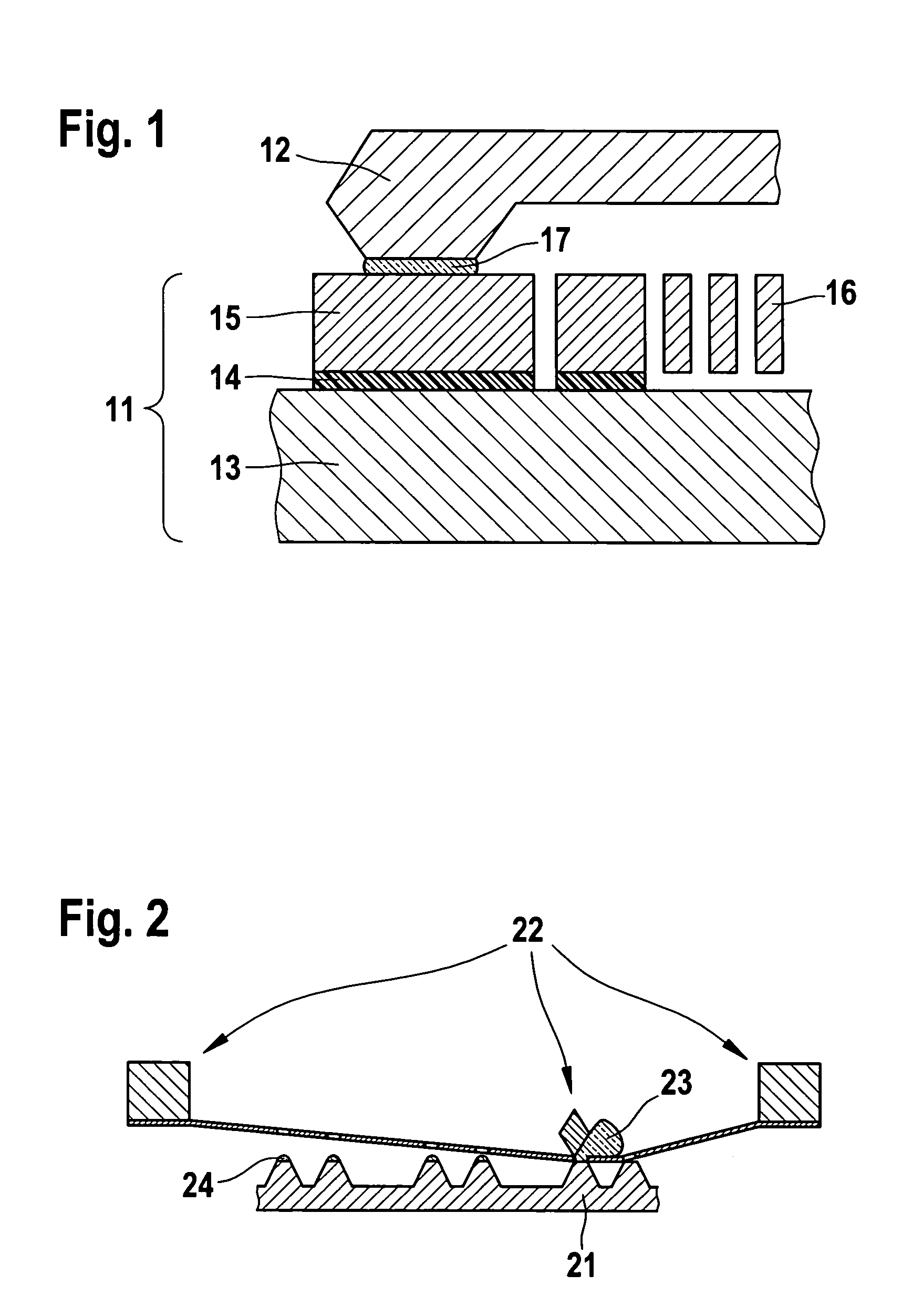Method for reducing the adhesive properties of MEMS and anti-adhesion-coated device
a technology of anti-adhesion coating and mems, which is applied in the direction of soldering apparatus, instruments, photomechanical apparatus, etc., can solve the problems that the application of the anti-sticking layer from the liquid phase onto the mems structure is only possible with difficulty, and achieve the effect of preventing the adhesion of the micromechanical structur
- Summary
- Abstract
- Description
- Claims
- Application Information
AI Technical Summary
Benefits of technology
Problems solved by technology
Method used
Image
Examples
Embodiment Construction
[0032]FIG. 1 shows an MEMS component 11 having a cap 12. MEMS component 11 is made up of a first layer or substrate 13, an insulating layer or sacrificial layer 14 and a second layer of functional layer 15 having patterned-out micromechanical elements 16. MEMS component 11 and cap 12 are bonded by a sealing glass 17.
[0033]FIG. 2 shows the method of silk-screening sealing glass 23 onto a cap wafer 21. In one embodiment of the present invention, sealing glass 23 is applied to the edges of a cap wafer 21 with the aid of a silk-screeing system 22. The suitable layer thickness of sealing glass coating 24 applied, of, typically, 5 to 40 μm, is achieved by having one or several printing processes. According to one embodiment of the method according to the present invention, sealing glass 23 contains the anti-stick active agent.
[0034]FIG. 3 shows the pre-bake process of a cap wafer 21 provided with sealing glass coating 24. In this context, the organic components of the sealing glass past...
PUM
| Property | Measurement | Unit |
|---|---|---|
| Temperature | aaaaa | aaaaa |
| Temperature | aaaaa | aaaaa |
| Pressure | aaaaa | aaaaa |
Abstract
Description
Claims
Application Information
 Login to View More
Login to View More - R&D
- Intellectual Property
- Life Sciences
- Materials
- Tech Scout
- Unparalleled Data Quality
- Higher Quality Content
- 60% Fewer Hallucinations
Browse by: Latest US Patents, China's latest patents, Technical Efficacy Thesaurus, Application Domain, Technology Topic, Popular Technical Reports.
© 2025 PatSnap. All rights reserved.Legal|Privacy policy|Modern Slavery Act Transparency Statement|Sitemap|About US| Contact US: help@patsnap.com



